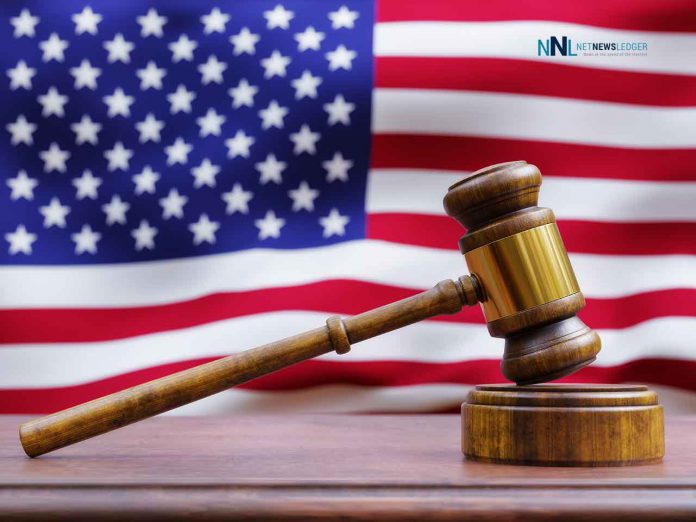Where most people go through their lives without having to visit a court, there are some who might get into trouble with the law due to an unfortunate series of events.
If you have been arrested, then you have to go through the long journey of the criminal justice system of the United States of America. Although criminal laws differ from state to state, there are some steps that are followed throughout the USA and should be known by every victim, witness, and the suspect so that he knows what coming for him.
The federal court system has three main levels: district courts (the trial court), circuit courts which are the first level of appeal, and the Supreme Court of the United States, the final level of appeal in the federal system.
Where most cases might end a lot quicker by plea deals, some drag on for a long time because of several trial dates and appeals.
Here are 9 stages of a criminal case that you should be familiar with:
Investigation
The very first step in a criminal case is an investigation, which is conducted by the local police. It may include interviewing the victim, questioning witnesses and suspects, collecting evidence, visiting the crime scene, making the case, thorough line-ups, etc.
The Arrest and Report
An arrest marks the official beginning of criminal prosecution. A police offer may arrest a person if; he sees a person committing a crime, or he has cause to believe that the crime was committed by the person he is arresting, or he has a valid warrant against someone.
Booking
After the arrest, the police initiate what is called the booking procedure. An official compiles vital information of the suspect including his name, contact information, nature of the crime, etc. Much of this information is passed down by the police. After recording the information, the suspect stands for a series of photographs referred to as a “mug shot”. These photos are marked by the suspect’s height, weight, and date of the incident. After that his personal property is confiscated and held until the suspect is released. An officer then takes impressions of the suspect’s fingerprint so that he can be scanned in the database to tie him to any previous crimes or register him as a new offender. The officer can also ask the suspect to submit saliva, hair, or other DNA samples. After doing a full-body search, checking for warrants, health conditions, the suspect is placed in the cell awaiting a trial or posting of bail.
Bail/Arraignment
After you have been incarcerated, the first thing you should ask is the cost to get out. After finding out your set bail amount, you can determine if you can be bailed out or not.
The first hearing in court after your arrest is called the arraignment. Most of the time you have to wait until the arraignment to have your bail set. At this time, you should be looking for an attorney. Depending upon the area you were arrested, you should get a lawyer expert in local laws. For example, if you were arrested in Los Angeles, you should be looking for an expert Los Angeles Criminal Lawyer. In criminal cases, a good lawyer stands out to be the difference between a conviction and acquittal. Your lawyer acts as an extension of your arm in the courtroom and presents your case in front of the court. A good lawyer knows certain tricks to present the case in a way that will help you get out of the most difficult situations.
Preliminary Hearing
The arraignment is followed by a preliminary hearing in which the prosecutor tries to convince the judge that there is enough evidence tying you to the case and it should be pursued. At the same time, your lawyer will do the opposite and try to show the judge that there is not enough evidence that the crime was committed by you. If the judge inclines towards the prosecutor, the case proceeds to the trial court, and if the judge does not agree with the prosecutor, the charges against you are dropped. Sometimes, after these motions, there is a second arraignment held in the Supreme Court and has the same procedures as the first one.
Pre-Trial Hearing
In a criminal charge, a case is often decided before going to the actual court. The prosecutor or the criminal lawyer can ask for any number of pre-trial hearing or motions that can exclude a lot of evidence and build up the case. This is the best opportunity for your attorney to shape the case in your favor by establishing some ground rules for your trial. Oftentimes, the issues are resolved by a plea bargain or settled by an amount of money as repercussions. So, the outcome of any case highly depends on the success of the pre-trial hearings.
Criminal Trial
However, if you are fully satisfied that you have not committed any crime and don’t take up a plea deal, the case moves on to the court trial where a jury decides your fate. A criminal trial has the following important stages:
· Choosing a Jury
The first step of proceeding with a case trial is choosing a jury. Except for only rare cases where the judge hears the case, a jury is selected in the presence of the prosecutor and your lawyer. During the selection process, the judge questions the jury as to matters pertaining to your case and excuse or select jurors based on their answers so that a non-biased jury is formed.
· Opening Statement
Once the jury has been formed, the prosecutor and your attorney form opening statements in front of the jury. The prosecutor is allowed to go first, and he presents the facts of the case and tries to show the jury what, how and why the defendant did what he did. After that, the defense gives the jury their version of facts and evidence and tries to show the jury that the defendant is innocent.
· Witness Testimony
The main part of a criminal case is the witness testimony where each side presents its key witnesses in front of the judge and the jury. Before making any statements, the witness is asked to swear an oath, to tell the truth. Then, the side which called the witness does a direct examination and engages in a questionnaire to perceive the witness’s take on the case. After direct examination, the other party is allowed to question the witness, cross-examine him and try to break him to create doubt in the mind of the jury. After cross-examination, the side which originally called the witness is given a second chance to engage in a re-direct examination and try to remedy any damages of cross-examination.
· Closing Argument
Just like the opening argument, which is used to initiate the case, this is used to sum it up. It gives a final chance to both the sides to speak in front of the jury where the prosecutor tries to convince them that he has presented enough evidence to get a conviction whereas the defense tries to establish that the prosecutor has failed to produce any concrete evidence hence the defendant must be found “not guilty”.
· Jury Instruction
After both sides have presented their cases in front of the jury, the judge gives the jury a set of legal instructions that help them decide whether the defendant should be held guilty or not. Based on the criminal charges and the evidence, the judge describes and sets some standards that the jury must follow. After that, the case is totally in the hands of the jury.
· Jury Verdict
After receiving the instructions from the judge, the jury gathers in a room to reach the verdict. By a process called deliberation which may last from a few hours to a few weeks, the jury discusses the case, reaches a verdict and presents it in front of the judge who announces it in front of the open court. After that, the jury is released from the duty. If the jury finds the defendant not guilty to acquit, he is released immediately, and if the jury finds him guilty, a date is set for sentencing. Until the sentencing, the defendant may remain on release status or held in custody depending upon the judge.
Sentencing
In this phase of the criminal case, the court determines the severity of the punishment for the convicted defendant. In determining a suitable punishment, the judge takes in several factors into account e.g the nature of the crime, the defendant’s statement, his age, his condition, his criminal history, and his personal circumstances. In most cases, the judge also takes the victim’s statements into account, which can have a significant effect on his judgment. Another thing that makes a difference is the degree of remorse shown by the defendant and his enthusiasm to change.
Appeal
Everyone is given a chance to make an appeal if they think that their case was mishandled and they were sentenced unfairly. An appeal is asked by the defendant so that a higher court looks at the previous trial proceeding to determine if any error occurred that may have affected the outcome of the trial.







